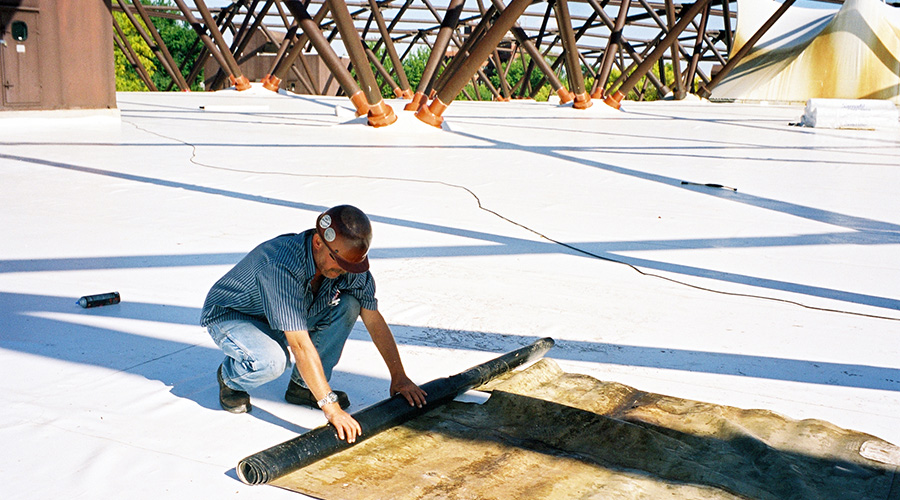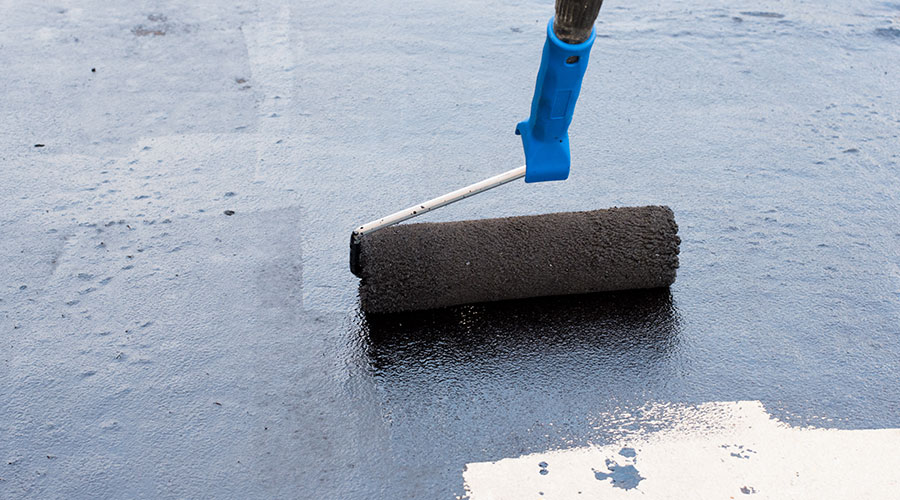Guidelines for Making Temporary and Permanent Roof Repairs
Once the inspector has documented the leak's entry point, the next step is to repair the leak. Workers often can use sealants to make temporary repairs on most every type of roofing system. Temporary repairs should be minimal so they do not impair the integrity of the roofing membrane. Even on a warranted roofing system, a building owner can order temporary repairs to cure the situation and minimize resulting damages.
Once the weather clears, a properly trained craftsman should make the appropriate permanent repair. On warranted roofs, the contractor should be an approved applicator to maintain the warranty's status.
To help identify the water's rooftop entry point in the case of a problematic roof leak, the inspector might need to perform a moisture survey. The inspector can do so using infrared, capacitance, or nuclear technologies, all of which can effectively identify wet roof insulation.
Water testing generally is a two-person process that involves spraying water onto the suspect roof area to determine the entry point. With one person inside, a second person sprays water onto a surface to determine if it is the water's entry point.
When conducting tests, workers need to be aware of the time delay between the application of water to the rooftop and its entry into the building. Being aware of this delay allows the tester to provide an appropriate amount of water and time to each structural component or piece of equipment to verify that it is watertight.
A well-versed, construction-oriented person — either an in-house maintenance worker or an outside consultant or contractor — is the best candidate for identifying leaks. In most cases, managers make this decision based on the resources available to address the problem.
Identifying roof leaks can be an art, but by using a proven, strategic approach, it can become more of a science.
Curtis L. Liscum, RRC, RRO, is senior consultant and partner with Benchmark Inc., a national roof-consulting firm in Cedar Rapids, Iowa.
Related Topics:














